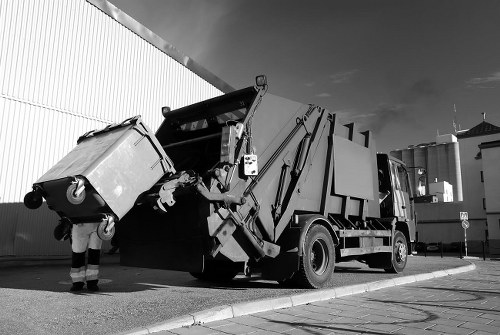Site Clearance in Temple

Temple sites are often sprawling areas that require meticulous planning and execution to ensure that the sacred space remains undisturbed. **Site clearance in temple** involves a series of careful steps to prepare the land for construction, renovation, or maintenance activities. This process is crucial to maintain the sanctity and structural integrity of the temple premises.
Effective site clearance not only involves the removal of unwanted vegetation and debris but also ensures that the surrounding environment is preserved. This balance is essential to maintain the spiritual ambiance that temples are known for.
The significance of site clearance in temple extends beyond mere physical preparation. It encompasses the cultural and spiritual aspects that are integral to temple functioning. Therefore, adopting the right strategies and methodologies is paramount.
The Importance of Site Clearance in Temples

**Site clearance in temple** settings is a delicate task that requires a deep understanding of both environmental and cultural factors. Temples are not just places of worship; they are repositories of history, art, and culture. Maintaining their sanctity during clearance activities ensures that these elements are preserved for future generations.
One of the primary reasons for thorough site clearance is to eliminate potential hazards that could compromise the structural safety of the temple. Overgrown vegetation, fallen trees, and accumulated debris can pose significant risks if not addressed promptly.
Furthermore, proper site clearance facilitates efficient space utilization, allowing for better management and organization within the temple complex. This is especially important for large temples that host numerous activities and events.
Steps Involved in Temple Site Clearance

The process of site clearance in temple involves several key steps that must be executed with precision. Following these steps ensures that the clearance is done effectively while respecting the temple's sacredness.
1. Planning and Assessment
The initial phase involves a comprehensive assessment of the site to identify areas that require clearance. This includes evaluating the current state of vegetation, existing structures, and any potential obstacles.
**Planning** is crucial to determine the scope of work, allocate resources, and establish a timeline for the clearance activities. It also involves obtaining necessary permits and approvals from relevant authorities.
2. Vegetation Removal
One of the primary tasks in site clearance is the removal of unwanted vegetation. This includes trimming overgrown trees, clearing shrubs, and eliminating invasive plant species that may threaten the temple's ecosystem.
Implementing eco-friendly methods for vegetation removal helps preserve the natural balance and ensures that the temple grounds remain harmonious with their surroundings.
3. Debris Management
Managing debris is essential to maintain a clean and safe environment within the temple premises. This involves the removal of fallen branches, leaves, and any other waste materials generated during the clearance process.
Proper disposal of debris prevents the accumulation of waste, reduces fire hazards, and enhances the overall aesthetic appeal of the temple grounds.
Tools and Equipment for Site Clearance

Utilizing the right tools and equipment is vital for efficient **site clearance in temple** projects. The selection of appropriate machinery can significantly impact the quality and speed of the clearance process.
- Chainsaws: Essential for cutting down trees and large branches.
- Brush Cutters: Ideal for trimming thick vegetation and undergrowth.
- Trenchers: Used for excavating and digging to clear uneven terrain.
- Bulldozers: Helpful in moving large amounts of debris and leveling the ground.
- Skid Steer Loaders: Versatile machines for various tasks, including lifting and transporting materials.
Employing modern, efficient equipment not only enhances productivity but also minimizes the physical strain on workers, ensuring that the clearance is carried out smoothly and safely.
Environmental Considerations

**Environmental sustainability** is a key aspect of site clearance in temple settings. It's important to adopt practices that minimize the environmental footprint and preserve the natural beauty of the temple surroundings.
Here are some environmental considerations to keep in mind:
- Waste Recycling: Recycle debris and organic waste to reduce landfill impact.
- Water Conservation: Implement measures to prevent soil erosion and manage water runoff effectively.
- Preservation of Local Flora and Fauna: Protect native plant species and ensure that local wildlife habitats are not disrupted during clearance activities.
- Use of Eco-Friendly Materials: Opt for sustainable materials and practices that reduce environmental harm.
By prioritizing environmental considerations, temple authorities can ensure that site clearance efforts contribute positively to the ecosystem and uphold the temple's commitment to nature preservation.
Safety Measures During Site Clearance
Safety is paramount during any site clearance operation, especially in temple complexes where historical structures and dense crowds may be present.
Implementing strict safety protocols helps prevent accidents and ensures that the clearance process does not pose any risks to workers or visitors.
Personal Protective Equipment (PPE)
All personnel involved in site clearance must wear appropriate PPE, including helmets, gloves, safety goggles, and steel-toed boots. This gear protects against potential injuries from falling debris and machinery mishaps.
Risk Assessment
Conducting a thorough risk assessment prior to starting the clearance activities identifies potential hazards and allows for the implementation of preventive measures. This includes assessing structural integrity, identifying unstable areas, and ensuring clear evacuation routes.
Training and Awareness
Proper training for all workers involved in site clearance is essential. They should be well-versed in operating equipment safely, handling emergencies, and following established protocols.
Choosing a Professional Site Clearance Service
Selecting the right professional service for **site clearance in temple** is critical to achieving desired outcomes. Professional services bring expertise, experience, and specialized equipment that can handle the unique challenges of temple site clearance.
Here are some factors to consider when choosing a service provider:
- Experience: Look for companies with a proven track record in temple or similar site clearance projects.
- Reputation: Check reviews and testimonials to gauge the reliability and quality of the service.
- Compliance: Ensure that the service provider adheres to local regulations and environmental standards.
- Insurance: Verify that the company has adequate insurance coverage to protect against potential liabilities.
- Equipment: Assess the quality and range of equipment the provider uses for clearance activities.
Partnering with a reputable professional service ensures that site clearance in temples is conducted efficiently, safely, and in harmony with the temple's cultural and environmental values.
Conclusion
**Site clearance in temple** is a multifaceted process that requires careful planning, the right tools, adherence to safety protocols, and a commitment to environmental sustainability. By understanding the importance and intricacies of this task, temple authorities can ensure that their sacred spaces remain pristine, safe, and conducive to worship.
Whether establishing a new temple or maintaining an existing one, site clearance plays a pivotal role in preserving the sanctity and enhancing the functionality of the temple grounds.
For those seeking professional assistance, **contact us today** to ensure your temple site is cleared with the utmost care and expertise.